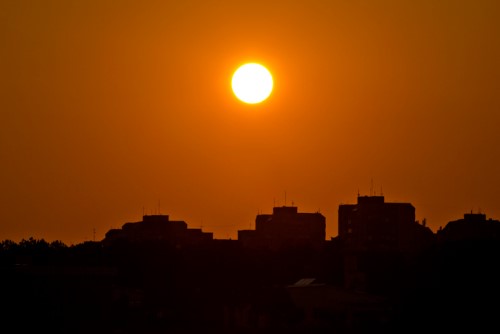

The National Oceanic and Atmospheric Administration (NOAA) has released data that shows the first half of 2018 had warmer to much-warmer-than-average conditions across the Earth’s land and ocean surfaces. In fact, this year looks set to be the fourth hottest year on record, following a recent trend with only 2015, 2016 and 2017 being hotter.
Continuous heat and dry weather can exacerbate all sorts of perils to property owners. At present, huge chunks of the western US and Canada are embroiled in battles with raging wildfires, which threaten to cause huge losses for the insurance industry.
Another peril intensified by rising temperatures and abnormal dry spells is that of land subsidence – the gradual settling or sinking of the Earth’s surface, often triggered by a lack of moisture causing the soil to dry and sink. When subsidence occurs near a property, it can result in the movement of building foundations, which can then lead to property damage.
“Subsidence becomes an issue, especially for properties in clay soils, when loss of moisture in the soil causes it to dry and shrink,” commented Kevin Williams, head of subsidence at Sedgwick, a global provider of technology-enabled risk, benefits and integrated business solutions. “Clay [and similar organic soils] shrinks and expands due to moisture content within the ground, so if you get a period of hot dry weather, the clay content within the ground could shrink if its moisture is drawn out by nearby trees and vegetation. When the ground shrinks and building foundations shift, abnormal stress is put on the building which can cause it to crack.”
Damages to homes caused by soil subsidence are not generally covered by homeowners’ insurance policies in North America, but there are actions homeowners can take to mitigate subsidence risk and prevent serious damages.
“Homeowners should try to maintain and control the vegetation around their property,” Williams told Insurance Business. “If they’re planting new trees or shrubbery into ground they know is vulnerable to subsidence, they should plant them a safe distance away from the building and the foundation. They should keep existing vegetation well-maintained, prune tree limbs to reduce moisture demand, and water lawns and vegetation during dry spells.”
When it comes to tackling subsidence risk, Sedgwick has turned to technology. The global risk solutions firm uses live remote crack monitoring and data analytic tools to actively predict and prevent subsidence events from occurring.
Williams explained: “We use technology to track and compare the dryness of the ground compared to recent years, as well as long-term weather forecasts to predict how the weather is likely to play out in four to six-week periods. We also use live remote crack monitoring, which feeds back data every eight hours and enables us to anticipate subsidence claim volumes before they occur. Crack monitoring alongside long-term weather forecasts, and soil monitoring, helps us to deal with subsidence risk.”
